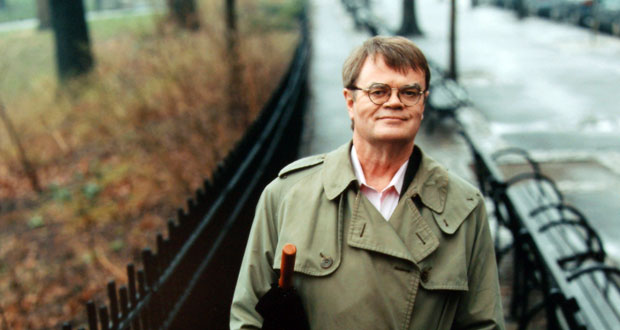Pay attention: Our stories are best told in the details

It’s not difficult to spot Garrison Keillor in a crowd. He’s 6-feet 3-inches tall, his hair is usually a little wild, his glasses are distinctly round, his eyebrows look like owls have built their nests there, his face looks like he is pondering a deep thought, and he wears red tennis shoes. So when I went to the airport to pick him up for a writer’s event at my school, I was confident I could find him without much effort.
Sure enough, he came down the escalator, and I walked over to introduce myself.
He’s a pretty quiet guy, unlike the persona he has on his program “A Prairie Home Companion” which started on public radio 40 years ago. He’s written several best-selling books, and appears on stage throughout the country telling stories and jokes, leading the audience in singing. He’s a combination of Will Rogers and Mark Twain. But in person, he seems a little shy.
We small-talked in the car. I’m from Minnesota and so is he. We have some mutual friends. We talked about writing, about books, about home. Or, I should say, I talked about those things. He stayed quiet. I brought him to our campus to show him around, and we walked through it for about 30 or 40 minutes. I told him about the history of the Point Loma Nazarene University campus—how it was once the site of the Theosophical Society, a religious group that tried to create a utopian society through natural beauty and the arts. I told him how the Navy needed the land on the peninsula of Point Loma during World War II, and how the area became the campus of Cal Western University, and how it became a Nazarene school when Pasadena College moved to Point Loma in 1973.
It felt like I was talking to myself—similar to some classes I teach! He didn’t really ask anything or even appear to be that interested. Then I took him to his hotel where he stayed until it was time for his evening performance of storytelling.
In front of the sold-out audience, he was lively and hilarious right from the start. Then he started telling a long, complicated story, and I felt my jaw fall open. His story was about the Point Loma area—he talked about the Theosophical Society, the Navy taking over the area, the Nazarenes coming down from Pasadena. Everything I had told him during our little walking tour—my monologue—was part of a larger story that he was telling in that moment.
At one point he walked to the edge of the stage, looked down at me in the front row, and raised those massive eyebrows at me, as if to say, “See? You thought I wasn’t paying attention, didn’t you? You thought I was ignoring your little history lesson, didn’t you?” Then he went back to his astonishingly funny story.
Afterward, people came up to me shaking their heads, amazed at his ability to keep the crowd spellbound and laughing for two hours as he paced through the auditorium, never looking at a note.
“He must have a huge staff of researchers,” the fans said. “He knew us so well, right down to the details!”
I just shook my head, amazed at what I had just witnessed.
“You have no idea,” I said.
I learned something from that experience. As a writer, I learned that great writers always take in the details around them—dialogue, weather, major and minor characters, assuming that they can be used at some point for a bigger purpose. Everything is potential material for a story.
It’s true about our lives, too. Everything around us, everyone around us, from the big event to the small one, from the greatest achievement to the worst failure, the places we’ve lived, the pain we have caused and endured, the joy we have experienced, all are part of our Big Story. That story is constantly being revised. How is your Story coming along? Pay attention to the details. Those might be the best parts.
— by Dean Nelson
Nelson is the founder and director of the journalism program at Point Loma Nazarene University in San Diego. His most recent book is “God Hides in Plain Sight: How to See the Sacred in a Chaotic World.”





